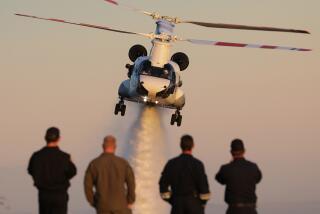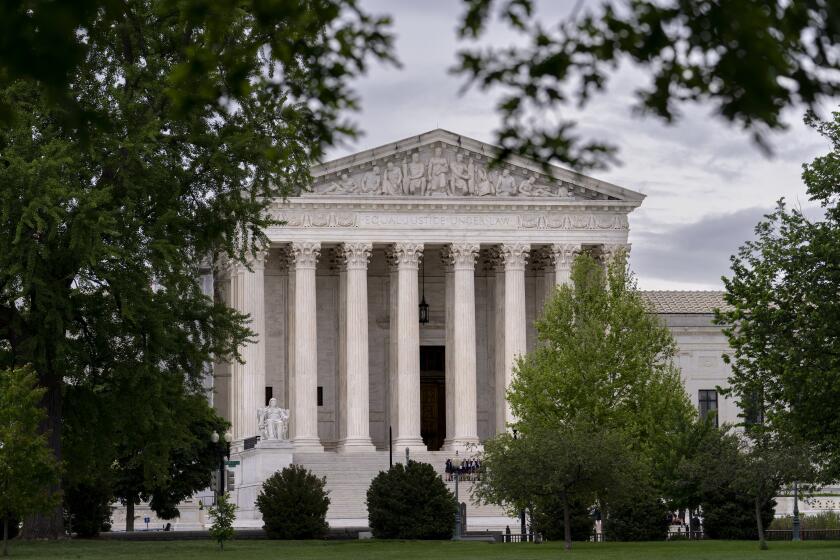Air Force Says Bill Threatens Some Test Flights : Desert Conservation: Military officials seek to allay businesses’ fears that proposed restrictions might force Edwards Air Force Base to move.
- Share via
Air Force officials told Antelope Valley business people Tuesday that a desert preservation bill pending in Congress could hamper low-altitude flights from Edwards Air Force Base.
However, they rejected local speculation that the base might be forced to move.
The proposed California desert protection act, sponsored by Sen. Alan Cranston (D-Calif.), would give about 7.5 million acres of desert, mostly in Southern California, either wilderness or parkland status. The land would include tracts under the 20,000-square-mile area of airspace used by Edwards Air Force Base and other military bases.
Cranston and environmental groups supporting his legislation contend that the bill does not attempt to restrict military use of airspace over the desert. But Air Force officials argued that language in the bill could be interpreted to do that.
“It probably would preclude us from being able to meet our mission,” said Robert Johnstone, chief of the plans and policies division at Edwards’ Air Force Flight Test Center. The 300,000-acre base in southern Kern County is where most of the Air Force’s advanced aircraft are designed and tested.
Johnstone’s warning came during a forum on the dispute held in Lancaster before a group of Antelope Valley business leaders. Edwards is the single biggest economic force in the high desert region. It employs about 14,000 people and has an estimated regional monetary impact of $1.1 billion a year.
Business leaders from nearby Lancaster and Palmdale in northern Los Angeles County came to the session believing that the Air Force might move the base if Cranston’s legislation passed. But Johnstone and other Air Force officials said the talk of moving was the result of a misunderstanding.
“Right now, I don’t have my suitcases packed,” Johnstone said.
The Air Force likes its 20,000-square-mile restricted flight area between Edwards and the town of Bishop to the north because it is sparsely populated and has a diversity of terrain suited for combat flight testing. Many flights are done at low altitudes, under 3,000 feet, to simulate avoiding enemy radar.
At issue in the desert dispute is language in Cranston’s bill that specifically allows low-level military flights over the desert areas, provided they are “in approximately the same location and degree as existed prior to the enactment of this act.”
His bill was originally silent on the subject, but military officials wanted the added language, and Cranston obliged. The military says the new language could hamper it by preventing testing that is different from what’s done now.
Environmentalists say they want some conditions in the bill to prevent the Air Force operations at Edwards from expanding from the current testing mode into a broader training operation. There are already 90,000 aircraft sorties a year in the military airspace, Johnstone said.
Jim Dodson, the base’s budget officer who also is a director of the California Desert Protection League, an environmental group backing Cranston’s bill, said preservationists are not bothered by the current flights. He said his group is satisfied with the bill.
More to Read
Get the L.A. Times Politics newsletter
Deeply reported insights into legislation, politics and policy from Sacramento, Washington and beyond. In your inbox twice per week.
You may occasionally receive promotional content from the Los Angeles Times.










